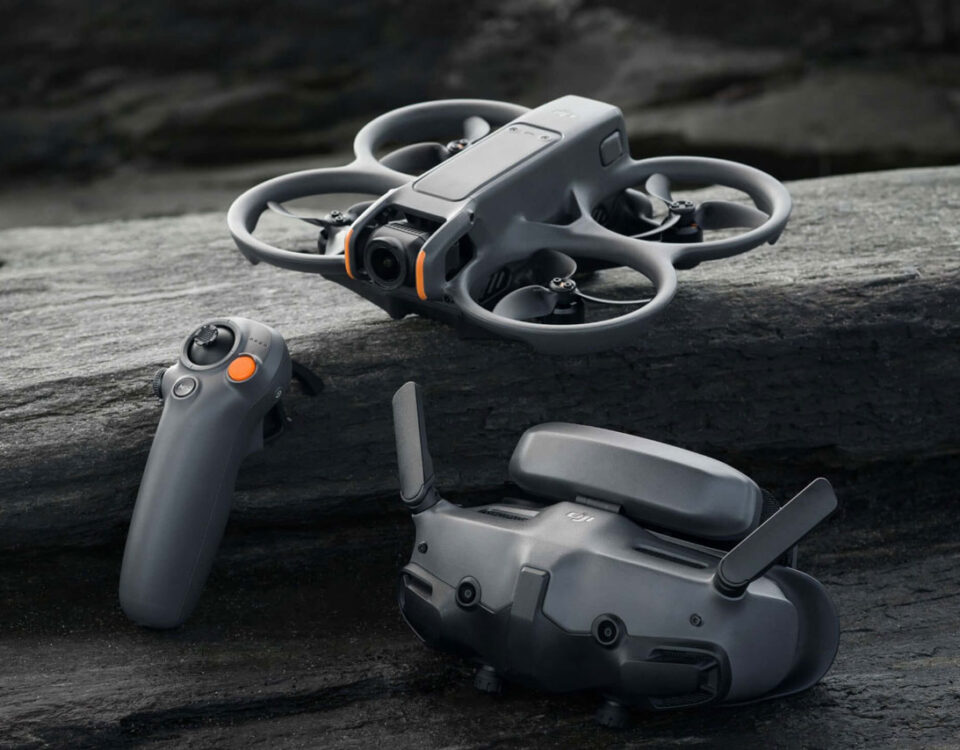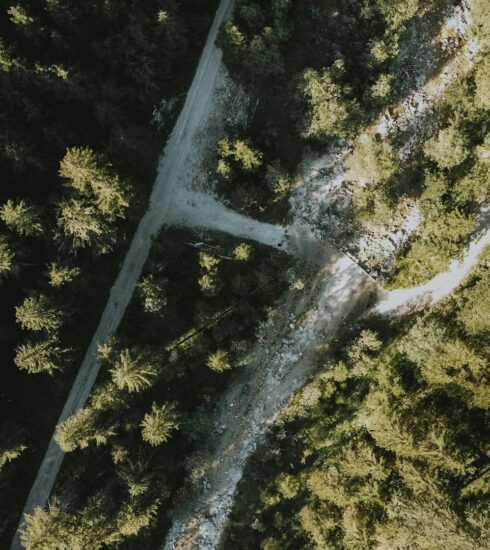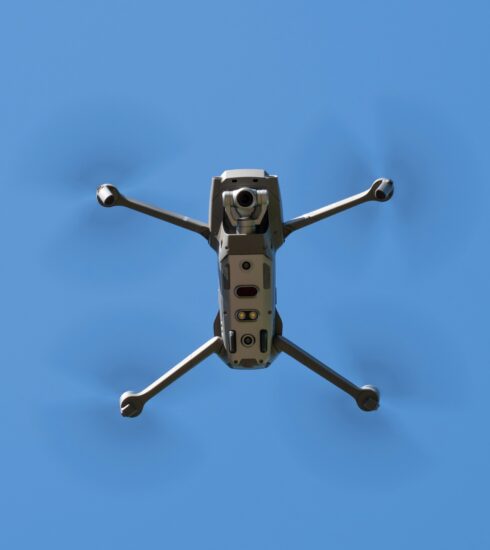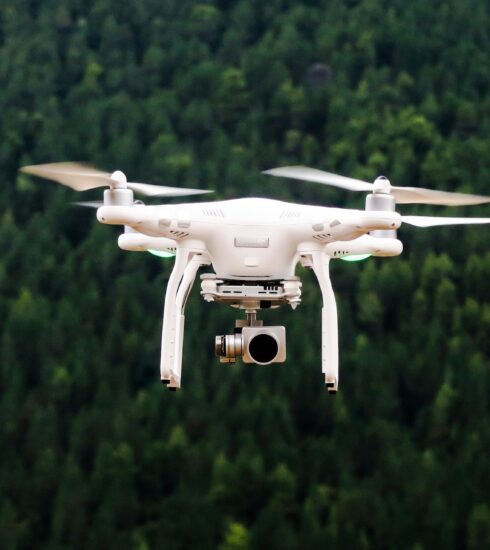How to Choose the Best Quadcopter Drone for Beginners
What to Consider When Buying Your First Drone
Jumping into the world of drones can be exciting, but picking the right one can be overwhelming. There are dozens of options, all with different features, price points, and capabilities. If you’re new to drones, you want something easy to fly, stable, and packed with the right safety features. Here’s what to keep in mind when choosing a quadcopter drone for beginners.
Ease of Use: Start Simple
The last thing you want is to spend hours assembling or tweaking settings before you even get to fly. Look for a Ready-to-Fly (RTF) drone.
RTF drones come pre-assembled and are ready to go straight out of the box. Some may require minor setup, like charging the battery or installing an app, but there’s no complicated building involved.
Other beginner-friendly features to look for:
- One-Touch Takeoff and Landing – A single button launches and lands the drone, reducing the risk of crashes.
- Auto-Leveling – Keeps the drone balanced in flight without needing constant adjustments.
- Beginner Flight Modes – Some drones have training modes that limit speed and movement for easier control.
If you’re just starting out, an RTF drone will save you frustration and let you focus on learning to fly.
Stability & Control: Keep It Steady
Drones can be tricky to handle, especially in outdoor conditions with wind. Stability features help make flying smoother and more enjoyable.
Here’s what to look for:
- GPS Stabilization – Helps the drone hold its position in the air without drifting.
- Altitude Hold – Keeps the drone at a fixed height even if you release the controls.
- Headless Mode – Removes the need to figure out which way the drone is facing, making it easier to control.
- Auto-Hovering – Allows the drone to stay in place when you let go of the controls.
These features make flying less intimidating and help prevent common beginner mistakes like losing control or crashing due to overcorrection.
Safety Features: Fly Without Worry
Accidents happen, but a Quadcopter Drone for Beginners typically comes with built-in safety features to minimize risks.
Look for:
- Obstacle Avoidance Sensors – Detect and avoid objects in the drone’s path.
- Return-to-Home (RTH) Function – If the battery gets low or the signal is lost, the drone automatically returns to its takeoff point.
- Propeller Guards – Protects the blades (and your fingers) in case of accidental crashes.
- Geo-Fencing – Prevents the drone from flying into restricted or dangerous areas.
A drone with strong safety features can help you fly with confidence, knowing you have backup systems in place.
Camera Quality: Do You Need One?
Not all beginner drones come with cameras, and that’s okay. If you’re buying a quadcopter drone for beginners just to practice flying, you might not need a camera at all.
But if you’re interested in aerial photography or video, consider:
- Resolution – 1080p is great for casual shots, but 4K provides sharper video quality.
- Gimbal Stabilization – Helps keep footage smooth even when the drone moves.
- Live Streaming (FPV Mode) – Allows you to see what the drone sees in real time through an app or headset.
For hobbyists, a 1080p drone with basic stabilization is a good start. If you’re serious about high-quality aerial shots, look for 4K options with a 3-axis gimbal.
Best Quadcopter Drone for Beginners (Top Picks & Features)
Not all beginner drones are created equal. Some are budget-friendly and perfect for learning, while others have premium features that make flying even easier. Below are the top quadcopter drones for beginners, each with a mix of user-friendly controls, solid stability, and good value for the price.
1. DJI Mini 4K – Best All-Around Starter Drone
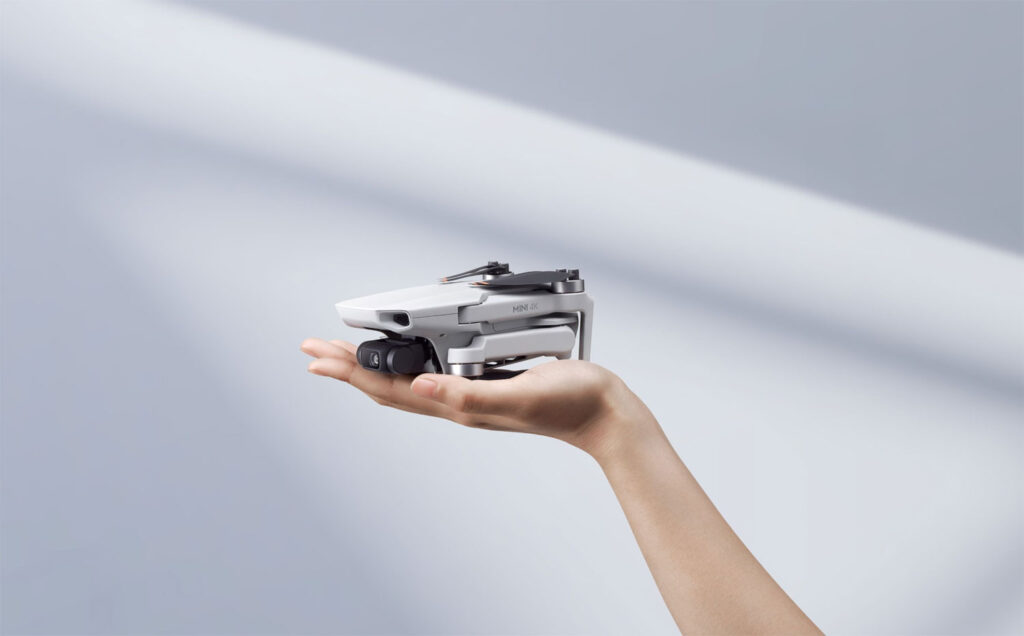
Why it’s great:
- 4K camera for sharp video and high-quality photos.
- Ultra-lightweight (sub-250g), meaning no FAA registration required.
- Smart flight modes make capturing smooth shots easy.
- Long battery life (up to 31 minutes per charge).
The DJI Mini 4K is a fantastic option if you want a beginner drone that can also take great photos and videos. It’s small, easy to carry, and doesn’t require registration in most countries.
Best for: New pilots who want a beginner-friendly drone with high-quality camera capabilities.
2. Ryze Tello – Budget-Friendly & Perfect for Practice
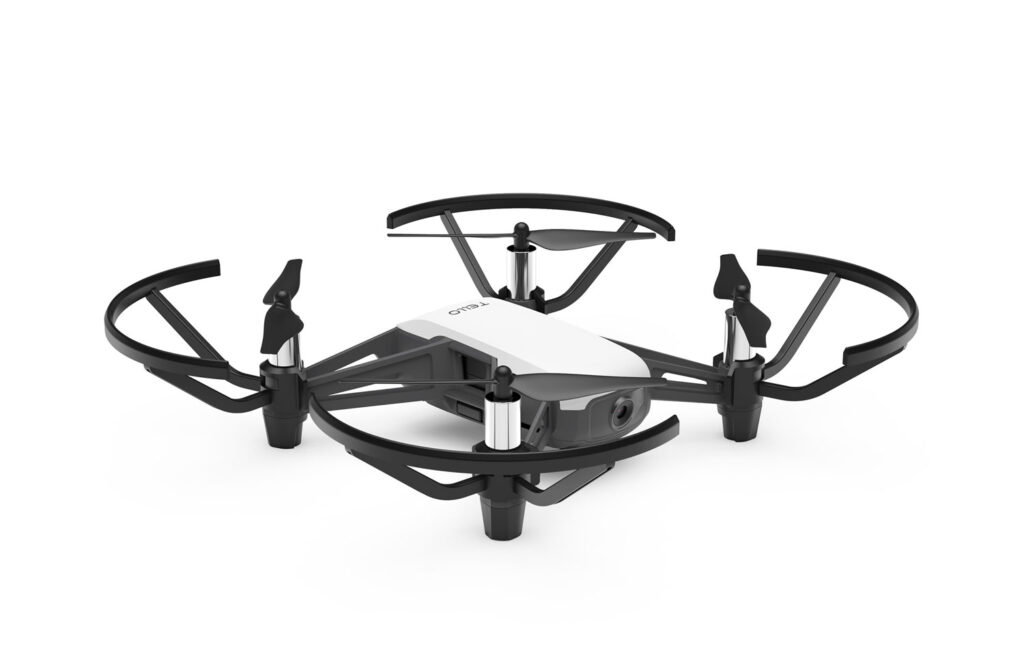
Why it’s great:
- Affordable (under $150), making it a great starter drone.
- Lightweight and durable for indoor flying.
- Simple smartphone app controls.
The Ryze Tello is an entry-level drone that’s easy to fly and perfect for learning the basics. It doesn’t have GPS or long-range flight capabilities, but for indoor practice and basic aerial shots, it’s a solid choice.
Best for: Beginners who want a budget-friendly way to learn how to fly.
3. DJI Mini 4 Pro – A Step Up for Future-Proofing
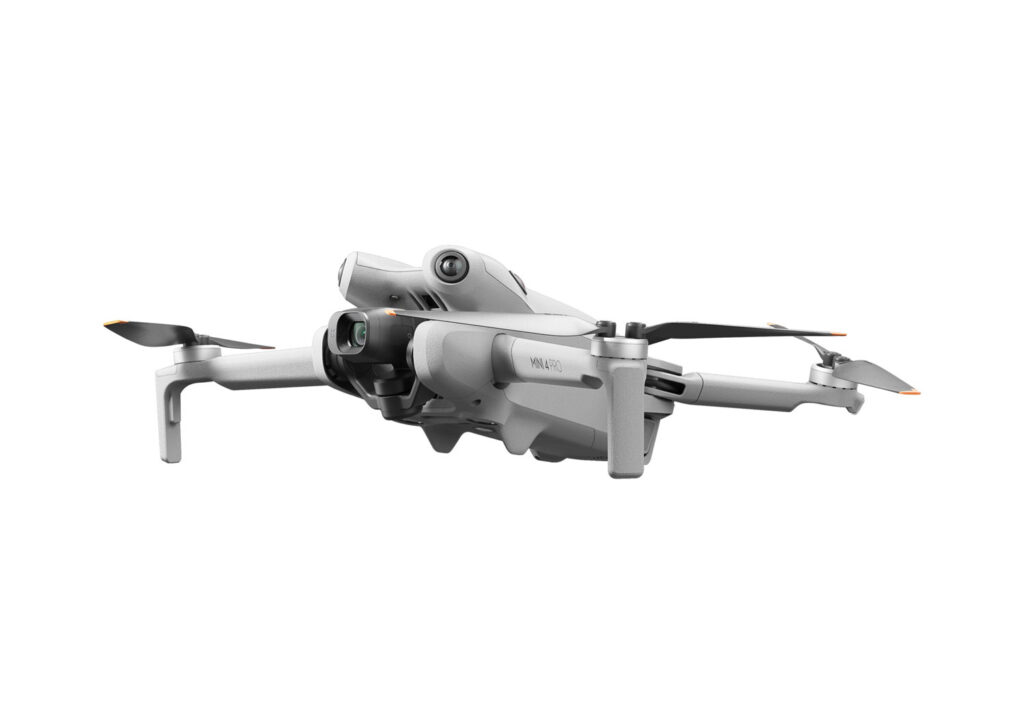
Why it’s great:
- Obstacle avoidance sensors to prevent crashes.
- 4K HDR camera for stunning aerial shots.
- Extended battery life (up to 45 minutes).
- Compact and lightweight, but with powerful performance.
If you’re willing to invest a bit more, the DJI Mini 4 Pro has all the beginner-friendly features you need while offering room to grow. It’s small enough to avoid FAA registration, but still packs a ton of professional-level features.
Best for: Beginners who want a feature-packed drone that can grow with them.
4. DJI Neo – The Most Adaptive Drone for New Pilots
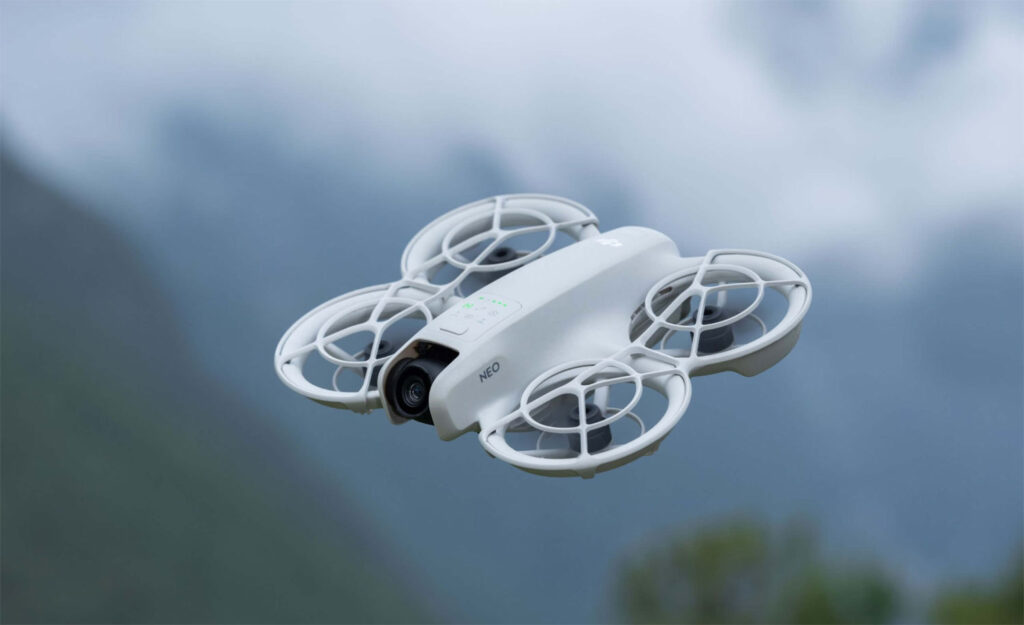
Why it’s great:
- Can function as an auto-flying drone or be manually controlled.
- Easy setup with minimal learning curve.
- Solid battery life and smooth stability in flight.
The DJI Neo is one of the easiest drones to fly, making it a great pick for those who don’t want to deal with complicated controls. Whether you’re looking for a hands-free experience or prefer manual piloting, this drone offers the best of both worlds.
Best for: Absolute beginners who want a hassle-free flying experience.
5. DJI Avata 2 – Best for Beginners Interested in FPV Flying

Why it’s great:
- FPV (First-Person View) mode for an immersive flying experience.
- Improved safety features to prevent crashes.
- Excellent image stabilization for smoother footage.
If you’re interested in FPV flying, where you see what the drone sees in real-time, the DJI Avata 2 is the best place to start. It’s designed with beginners in mind but still delivers an exciting and immersive experience.
Best for: New pilots who want to explore FPV drone flying.
Additional Considerations for First-Time Drone Owners
Buying a quadcopter drone for beginners is just the first step. Before taking off, there are a few more things to think about—like where you can fly, whether you need to register your drone, and how to improve your skills without crashing.
Where Will You Fly? (Indoor vs. Outdoor Use)
Not all drones handle the same in different environments. Some are built for outdoor adventures, while others are better suited for indoor practice.
Indoor-Friendly Drones:
- Ryze Tello – Small, lightweight, and safe for indoor flying.
- DJI Neo – Adaptable to both indoor and outdoor settings.
Best for Indoor Flying:
✔ Small drones with propeller guards.
✔ Drones that use optical flow sensors instead of GPS.
✔ Models with low-speed modes to avoid crashing into walls.
Outdoor-Friendly Drones:
- DJI Mini 4K – Lightweight yet stable, great for outdoor shots.
- DJI Mini 4 Pro – Advanced stability features for breezy conditions.
Best for Outdoor Flying:
✔ Drones with GPS stabilization to stay in place.
✔ Models that handle wind well (heavier drones tend to perform better).
✔ Long-range flight capabilities if you want to explore further.
If you’re just starting, begin indoors or on calm days outdoors. Windy conditions can make flying tricky, and losing control is easier than you’d think.
Understanding Drone Regulations & Registration
Before you fly, check the rules. Depending on your drone’s weight, you may need to register it with your country’s aviation authority.
United States (FAA Rules)
- Drones under 250g (like the DJI Mini 4K) do not need to be registered for recreational use.
- Drones over 250g must be registered with the FAA (Federal Aviation Administration).
- You must follow no-fly zones, which include airports, military bases, and certain public spaces.
- If you plan to use your drone for commercial purposes (even just selling drone photos), you need a Part 107 license.
Other Countries
- UK & EU: Drones over 250g require registration and an operator ID.
- Canada: Registration is required for drones over 250g, and you may need a pilot certificate.
- Australia: No registration for hobbyists, but drones over 250g have stricter flight restrictions.
You can check local drone laws through official government websites or aviation apps like B4UFLY (USA) or Drone Assist (UK).
Learning Resources: Training Before Takeoff
Drones have a learning curve, but there are ways to practice before taking your first real flight.
Use Beginner Flight Modes
Most quadcopter drones for beginners come with training or beginner modes that:
✔ Limit speed and altitude.
✔ Slow down responses to make flying smoother.
✔ Prevent accidental aggressive movements.
Try a Drone Flight Simulator
Many drones (especially DJI models) have companion apps with built-in flight simulators. These allow you to practice flying in a risk-free virtual environment.
Popular drone simulators include:
- DJI Flight Simulator – Designed for DJI drones, great for practice.
- Liftoff (for FPV flying) – Perfect if you want to get into FPV drone racing.
- VelociDrone – Another solid FPV simulator.
Join a Drone Community or Class
If you want hands-on experience, look for:
- Local drone clubs – Many cities have groups that organize beginner meetups.
- Online forums – Check out r/drones on Reddit or drone Facebook groups.
- YouTube tutorials – Channels like UAV Coach and Drone Film Guide offer great beginner tips.
Starting with training modes, flight simulators, or a local drone club can help you avoid costly mistakes when you’re first learning.
Think Long-Term: Will You Upgrade?
Your first drone might not be your last. If you think you’ll want to expand your skills—whether that’s shooting better videos, flying longer distances, or trying FPV racing—you might want aQuadcopter Drone for Beginners with room to grow.
If you want to upgrade later, consider:
✔ A drone with modular add-ons, like a camera upgrade or better battery.
✔ A model that has advanced flight modes you can learn over time.
✔ A drone that lets you adjust speed and controls as you get better.
Drones like the DJI Mini 4 Pro or DJI Avata 2 are beginner-friendly but offer enough features that you won’t outgrow them too fast.
Final Thoughts
Choosing the right quadcopter drone for beginners comes down to what you need. If you just want to practice, something simple like the Ryze Tello will do the job. If you’re looking for an all-around great starter drone, the DJI Mini 4K is a solid choice. And if you think you’ll want more advanced features down the line, the DJI Mini 4 Pro or DJI Avata 2 could be worth considering.
No matter which drone you choose, take time to learn the basics, practice in beginner modes, and fly safely. Before you know it, you’ll be capturing amazing aerial shots and mastering smooth flights.
Frequently Asked Questions (FAQ)
1. What is the best quadcopter drone for beginners?
The DJI Mini 4K is one of the best beginner drones because it’s lightweight, easy to fly, and comes with a high-quality 4K camera. If you’re on a budget, the Ryze Tello is a great option for learning the basics without spending too much.
2. Do I need to register my drone before flying?
If your drone weighs over 250 grams, you’ll need to register it with the FAA (USA) or your country’s aviation authority. Drones like the DJI Mini 4K and Mini 4 Pro are under this weight limit and don’t require registration for recreational use in most places.
3. What features make a drone easier to fly for beginners?
Look for features like GPS stabilization, altitude hold, headless mode, and auto-hovering. These help keep the drone steady, make controls more intuitive, and reduce the chances of crashes.
4. How long does the battery last on beginner drones?
Battery life varies, but most beginner-friendly drones have 20-45 minutes of flight time per charge. The DJI Mini 4 Pro offers one of the longest battery lives at up to 45 minutes.
5. Can I fly a drone in my backyard?
Yes, as long as you’re following local drone laws. Some areas have restrictions on flying near airports, parks, or private property. Always check for no-fly zones using apps like B4UFLY (USA) or Drone Assist (UK) before flying.

